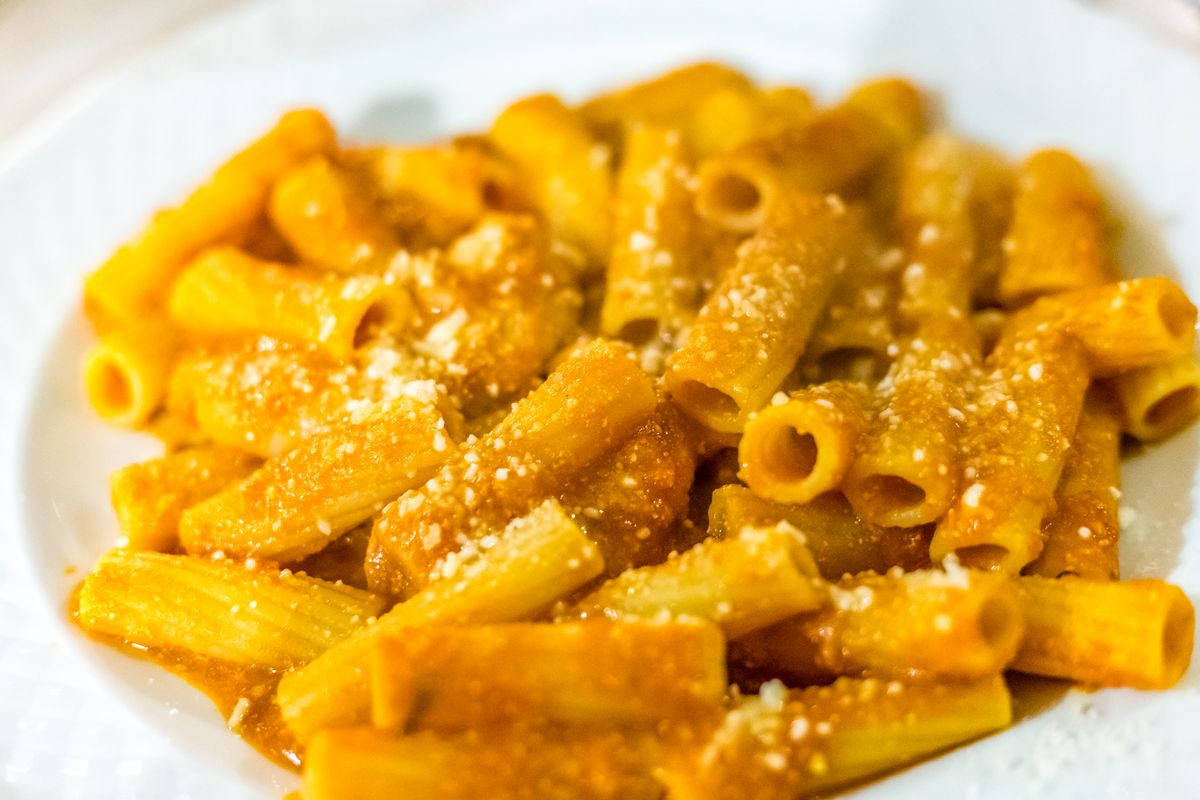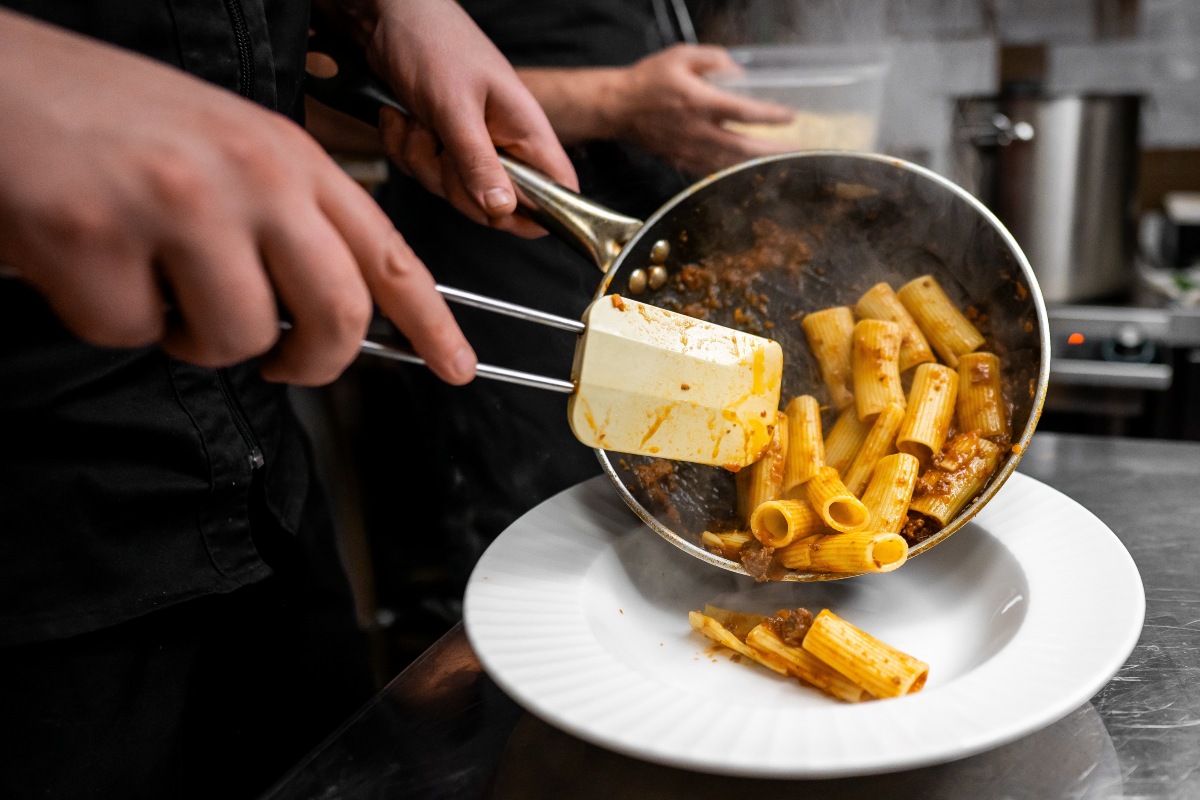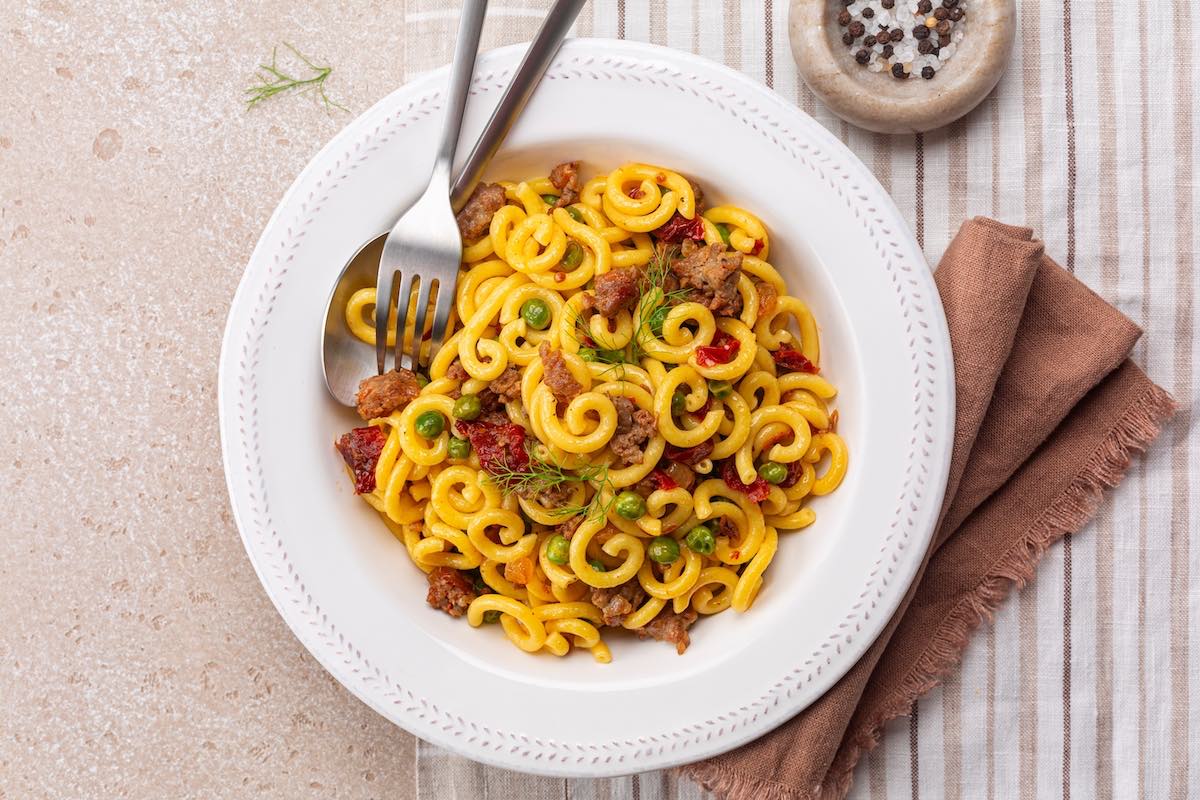Recipes
Roman pajata


Rigatoni with pajata are a typical product of Roman cuisine. Let's find out how to prepare them with the classic recipe.
Pajata, also known as straw, is a traditional dish of Roman cuisine, less well-known than the great classics such as tripe or Coda alla Vaccinara . It is prepared using the fifth quarter , specifically we are talking about veal pajata meaning the intestine of the animal not yet weaned , therefore fed solely with milk. In the Marche region, this cut is called trimming .
The most popular way to consume the recipe is to prepare rigatoni with pajata. The intestine is cut into small pieces which are then knotted one by one and left to cook in the tomato sauce . The rennet contained in the intestine coagulates the sauce giving it a creamy consistency. In short, if you are looking for delicious but at the same time particular recipes, this is for you.

Preparation
How to prepare rigatoni with pajata with the original recipe
First, finely chop the celery and onion and brown them in a pan together with the garlic clove until they are tender.
Add the pajata already knotted and cleaned by the butcher (we advise you to leave this step to expert hands) after having washed it well and brown it for a few minutes.
Add the white wine and when you no longer smell the alcohol rising from the pan, add the tomato sauce , a pinch of salt and the chilli pepper and start cooking with the lid on. It will take a couple of hours before the sauce is ready and, if necessary, you can add a little water to aid cooking.
Once the sauce is ready, boil the pasta in plenty of salted water, drain it well and sauté it in the pan with the sauce. Complete with a sprinkling of pecorino and you will taste how delicious!
The process, as you can see, is similar to any other sauce. The most complex part is cleaning the intestine: you will have to remove first the fat and then the film that covers it without piercing it. The fat will be thrown away while the skin will be used to tie the knots. In this video you can observe all the steps, from cleaning to cooking the strawata.
Rigatoni with pajata are perfect if you are looking for particular and authentic recipes. Just think that they also make an appearance in the film Il marchese del Grillo with Alberto Sordi. Alternatively, we recommend you try something more classic but still typical of Roman cuisine: pasta carbonara .
Conservation
The rigatoni with pajata can be kept in the refrigerator for a couple of days. We recommend heating them in a pan before consuming them.
Origin and history
It is not difficult to understand the poor origins of this dish. In the Testaccio district, near the vaccinari, the sauce with pajata was born. As often happens in the gastronomic history of our country, the need to use products considered waste and sold for a few lire has sharpened the ingenuity of restaurateurs.
The so-called fifth quarter was in fact given, together with a rather meager salary, to the scorchichini , the workers of the nearby slaughterhouse in the neighborhood. They used to take them to the taverns where they were then cooked. Thus, starting from the end of the 18th century, veal offal became the protagonists of Roman cuisine.
Riproduzione riservata © - WT












